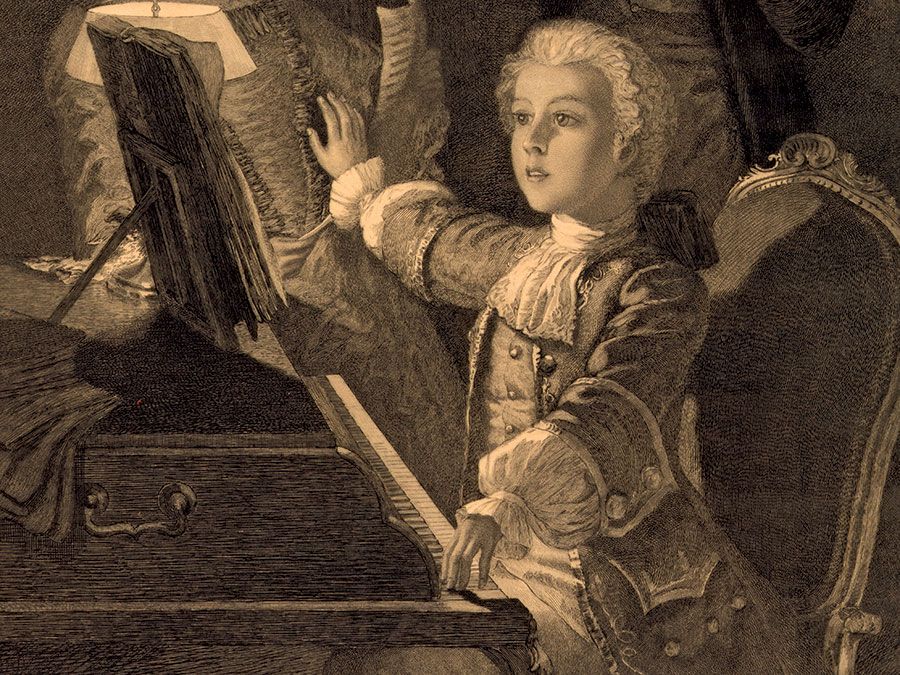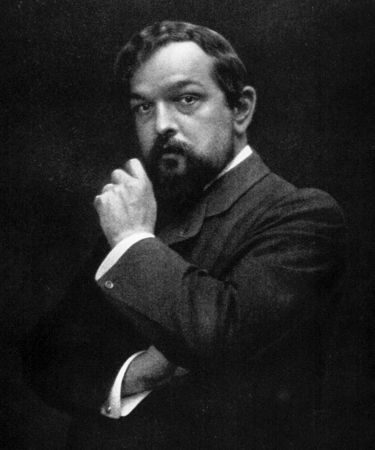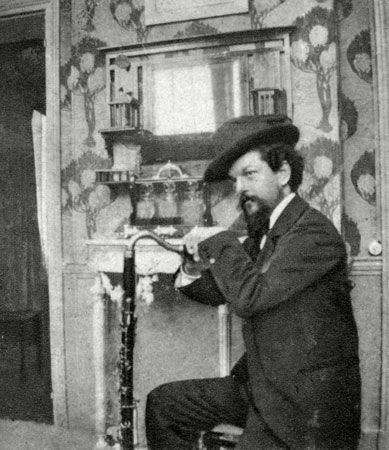Claude Debussy
- In full:
- Achille-Claude Debussy
- Born:
- August 22, 1862, Saint-Germain-en-Laye, France
- Died:
- March 25, 1918, Paris (aged 55)
- Also Known As:
- Achille-Claude Debussy
- Awards And Honors:
- Prix de Rome
- Movement / Style:
- Impressionism
Why is Claude Debussy famous?
What did Claude Debussy create?
What was Claude Debussy’s early life like?
Claude Debussy (born August 22, 1862, Saint-Germain-en-Laye, France—died March 25, 1918, Paris) was a French composer whose works were a seminal force in the music of the 20th century. He developed a highly original system of harmony and musical structure that expressed in many respects the ideals to which the Impressionist and Symbolist painters and writers of his time aspired. His major works include Clair de lune (“Moonlight,” in Suite bergamasque, 1890–1905), Prélude à l’après-midi d’un faune (1894; Prelude to the Afternoon of a Faun), the opera Pelléas et Mélisande (1902), and La Mer (1905; “The Sea”).
Early period
Debussy showed a gift as a pianist by the age of nine. He was encouraged by Madame Mauté de Fleurville, who was associated with the Polish composer Frédéric Chopin, and in 1873 he entered the Paris Conservatory, where he studied the piano and composition, eventually winning in 1884 the Grand Prix de Rome with his cantata L’Enfant prodigue (The Prodigal Child).
Debussy’s youth was spent in circumstances of great turbulence. He was almost overwhelmed by situations of great extremes, both material and emotional. While living with his parents in a poverty-stricken suburb of Paris, he unexpectedly came under the patronage of a Russian millionairess, Nadezhda Filaretovna von Meck, who engaged him to play duets with her and her children. He traveled with her to her palatial residences throughout Europe during the long summer vacations at the Conservatory. In Paris during this time he fell in love with a singer, Blanche Vasnier, the beautiful young wife of an architect; she inspired many of his early works. It is clear that he was torn by influences from many directions; these stormy years, however, contributed to the sensitivity of his early style.
This early style is well illustrated in one of Debussy’s best-known compositions, Clair de lune. The title refers to a folk song that was the conventional accompaniment of scenes of the lovesick Pierrot in the French pantomime, and indeed the many Pierrot-like associations in Debussy’s later music, notably in the orchestral work Images (1912) and the Sonata for Cello and Piano (1915; originally titled Pierrot fâché avec la lune [“Pierrot Vexed by the Moon”]), show his connections with the circus spirit that also appeared in works by other composers, notably the ballet Petrushka (1911) by Igor Stravinsky and Pierrot Lunaire by Arnold Schoenberg.
Middle period
As a holder of the Grand Prix de Rome, Debussy was given a three-year stay at the Villa Medici in Rome, where, under what were supposed to be ideal conditions, he was to pursue his creative work. Most composers who were granted this state scholarship, however, found life in this magnificent Renaissance palace irksome and longed to return to simpler and more familiar surroundings. Debussy himself eventually fled from the Villa Medici after two years and returned to Blanche Vasnier in Paris. Several other women, some of doubtful reputation, were also associated with him in his early years. At this time Debussy lived a life of extreme indulgence. Once one of his mistresses, Gabrielle (“Gaby”) Dupont, threatened suicide. His first wife, Rosalie (“Lily”) Texier, a dressmaker, whom he married in 1899, did in fact shoot herself, though not fatally, and, as is sometimes the case with artists of passionate intensity, Debussy himself was haunted by thoughts of suicide.

The main musical influence in Debussy’s work was the work of Richard Wagner and the Russian composers Aleksandr Borodin and Modest Mussorgsky. Wagner fulfilled the sensuous ambitions not only of composers but also of the Symbolist poets and the Impressionist painters. Wagner’s conception of Gesamtkunstwerk (“total art work”) encouraged artists to refine upon their emotional responses and to exteriorize their hidden dream states, often in a shadowy, incomplete form; hence the more tenuous nature of the work of Wagner’s French disciples. It was in this spirit that Debussy wrote the symphonic poem Prélude à l’après-midi d’un faune (1894). Other early works by Debussy show his affinity with the English Pre-Raphaelite painters; the most notable of these works is La Damoiselle élue (1888), based on “The Blessed Damozel” (1850), a poem by the English poet and painter Dante Gabriel Rossetti. In the course of his career, however, which covered only 25 years, Debussy was constantly breaking new ground. Explorations, he maintained, were the essence of music; they were his musical bread and wine. His single completed opera, Pelléas et Mélisande (first performed in 1902), demonstrates how the Wagnerian technique could be adapted to portray subjects like the dreamy nightmarish figures of this opera who were doomed to self-destruction. Debussy and his librettist, Maurice Maeterlinck, declared that they were haunted in this work by the terrifying nightmare tale of Edgar Allan Poe, The Fall of the House of Usher. The style of Pelléas was to be replaced by a bolder, more highly coloured manner. In his seascape La Mer (1905) he was inspired by the ideas of the English painter J.M.W. Turner and the French painter Claude Monet. In his work, as in his personal life, he was anxious to gather experience from every region that the imaginative mind could explore.
Late period
In 1905 Debussy’s illegitimate daughter, Claude-Emma, was born. He had divorced Lily Texier in 1904 and subsequently married his daughter’s mother, Emma Bardac. Repelled by the gossip and scandal arising from this situation, he sought refuge for a time at Eastbourne, on the south coast of England. For his daughter, nicknamed Chouchou, he wrote the piano suite Children’s Corner (1908). Debussy’s spontaneity and the sensitive nature of his perception facilitated his acute insight into the child mind, an insight noticeable particularly in Children’s Corner, a French counterpart to Mussorgsky’s song cycle The Nursery; in the Douze Préludes, 2 books (1910, 1913; “Twelve Preludes”), for piano; and in the ballet La Boîte à joujoux (first performed in 1919; The Box of Toys).
In his later years, it is the pursuit of illusion that marks Debussy’s instrumental writing, especially the strange, other-worldly Cello Sonata. This noble bass instrument takes on, in chameleon fashion, the character of a violin, a flute, and even a mandolin. Debussy was developing in this work ideas of an earlier period, those expressed in a youthful play he had written, Frères en art (Brothers in Art), where his challenging, indeed anarchical, ideas are discussed among musicians, painters, and poets. (He had in fact published in one of the anarchist journals poems that he had written and that he later set to music in the song cycle Proses lyriques [1893].)























